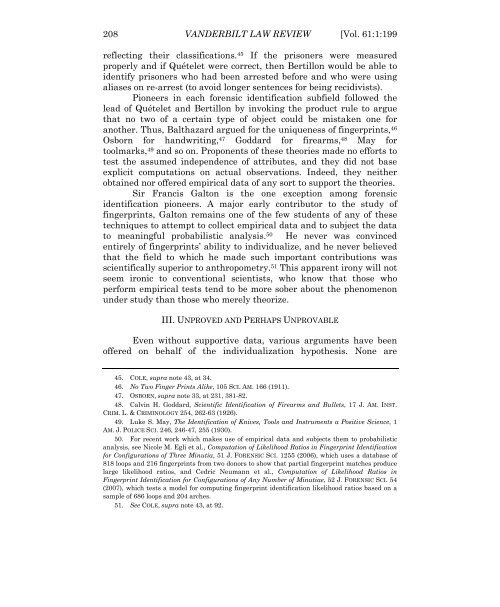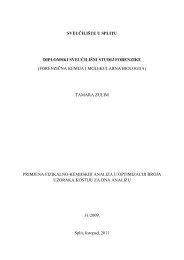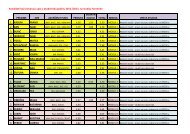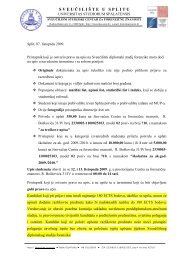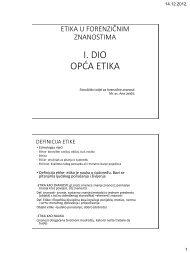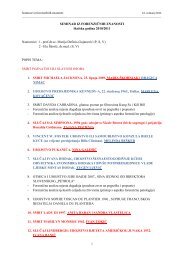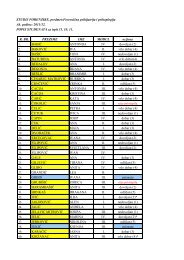The Individualization Fallacy in Forensic Science Evidence
The Individualization Fallacy in Forensic Science Evidence
The Individualization Fallacy in Forensic Science Evidence
You also want an ePaper? Increase the reach of your titles
YUMPU automatically turns print PDFs into web optimized ePapers that Google loves.
208 VANDERBILT LAW REVIEW [Vol. 61:1:199reflect<strong>in</strong>g their classifications. 45 If the prisoners were measuredproperly and if Quételet were correct, then Bertillon would be able toidentify prisoners who had been arrested before and who were us<strong>in</strong>galiases on re-arrest (to avoid longer sentences for be<strong>in</strong>g recidivists).Pioneers <strong>in</strong> each forensic identification subfield followed thelead of Quételet and Bertillon by <strong>in</strong>vok<strong>in</strong>g the product rule to arguethat no two of a certa<strong>in</strong> type of object could be mistaken one foranother. Thus, Balthazard argued for the uniqueness of f<strong>in</strong>gerpr<strong>in</strong>ts, 46Osborn for handwrit<strong>in</strong>g, 47 Goddard for firearms, 48 May fortoolmarks, 49 and so on. Proponents of these theories made no efforts totest the assumed <strong>in</strong>dependence of attributes, and they did not baseexplicit computations on actual observations. Indeed, they neitherobta<strong>in</strong>ed nor offered empirical data of any sort to support the theories.Sir Francis Galton is the one exception among forensicidentification pioneers. A major early contributor to the study off<strong>in</strong>gerpr<strong>in</strong>ts, Galton rema<strong>in</strong>s one of the few students of any of thesetechniques to attempt to collect empirical data and to subject the datato mean<strong>in</strong>gful probabilistic analysis. 50 He never was conv<strong>in</strong>cedentirely of f<strong>in</strong>gerpr<strong>in</strong>ts’ ability to <strong>in</strong>dividualize, and he never believedthat the field to which he made such important contributions wasscientifically superior to anthropometry. 51 This apparent irony will notseem ironic to conventional scientists, who know that those whoperform empirical tests tend to be more sober about the phenomenonunder study than those who merely theorize.III. UNPROVED AND PERHAPS UNPROVABLEEven without supportive data, various arguments have beenoffered on behalf of the <strong>in</strong>dividualization hypothesis. None are45. COLE, supra note 43, at 34.46. No Two F<strong>in</strong>ger Pr<strong>in</strong>ts Alike, 105 SCI. AM. 166 (1911).47. OSBORN, supra note 33, at 231, 381-82.48. Calv<strong>in</strong> H. Goddard, Scientific Identification of Firearms and Bullets, 17 J. AM. INST.CRIM. L. & CRIMINOLOGY 254, 262-63 (1926).49. Luke S. May, <strong>The</strong> Identification of Knives, Tools and Instruments a Positive <strong>Science</strong>, 1AM. J. POLICE SCI. 246, 246-47, 255 (1930).50. For recent work which makes use of empirical data and subjects them to probabilisticanalysis, see Nicole M. Egli et al., Computation of Likelihood Ratios <strong>in</strong> F<strong>in</strong>gerpr<strong>in</strong>t Identificationfor Configurations of Three M<strong>in</strong>utia, 51 J. FORENSIC SCI. 1255 (2006), which uses a database of818 loops and 216 f<strong>in</strong>gerpr<strong>in</strong>ts from two donors to show that partial f<strong>in</strong>gerpr<strong>in</strong>t matches producelarge likelihood ratios, and Cedric Neumann et al., Computation of Likelihood Ratios <strong>in</strong>F<strong>in</strong>gerpr<strong>in</strong>t Identification for Configurations of Any Number of M<strong>in</strong>utiae, 52 J. FORENSIC SCI. 54(2007), which tests a model for comput<strong>in</strong>g f<strong>in</strong>gerpr<strong>in</strong>t identification likelihood ratios based on asample of 686 loops and 204 arches.51. See COLE, supra note 43, at 92.


